Submitted by Aaron Chan via Medium.com,
Last week, we discussed the precarious state of the overstretched U.S. consumer and the spill-over effects of poor performance on the part of major retailers and other consumer discretionaries. In a nutshell, consumer credit growth appears to have reached its cycle-high and retail sales growth is beginning to flatline:
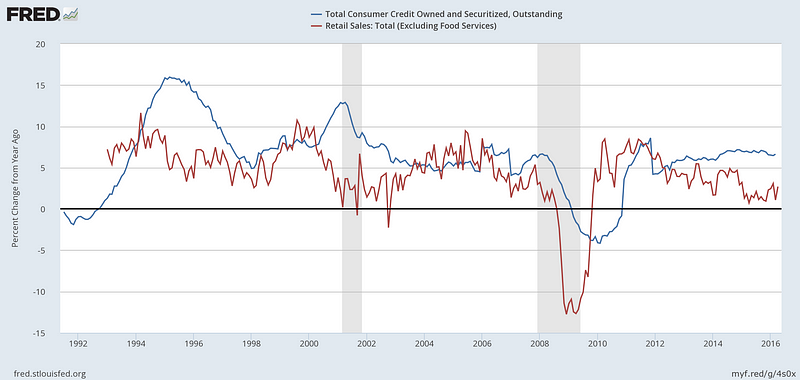
Credit conditions, for large and small companies, are also tightening which could be further exacerbated by a Fed rate-hike (unlikely). For an economy that is built on fractional-reserve banking and credit expansion, tightening lending standards would be akin to curbing life-support for a vegetative patient:
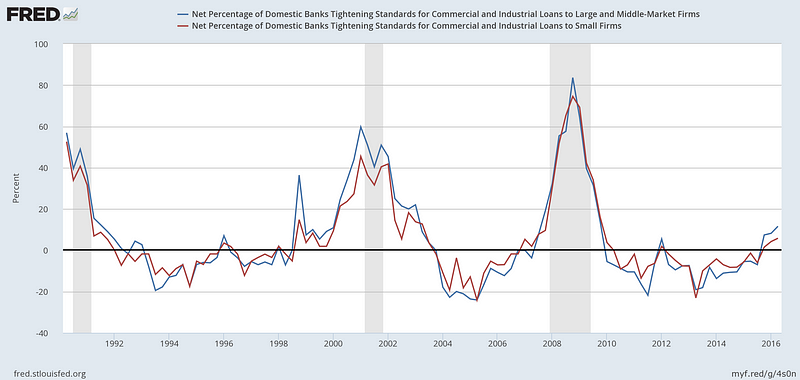
Understandably, retailers and other consumer discretionary stocks have sold-off, or are in the process or doing so. Last week, Target reported underwhelming top-line revenue and its stock price phase-shifted downward by over 7%. The company also admitted to inventory accumulation (among its competitors as well) which should necessitate discounted pricing and put pressure on future profitability:
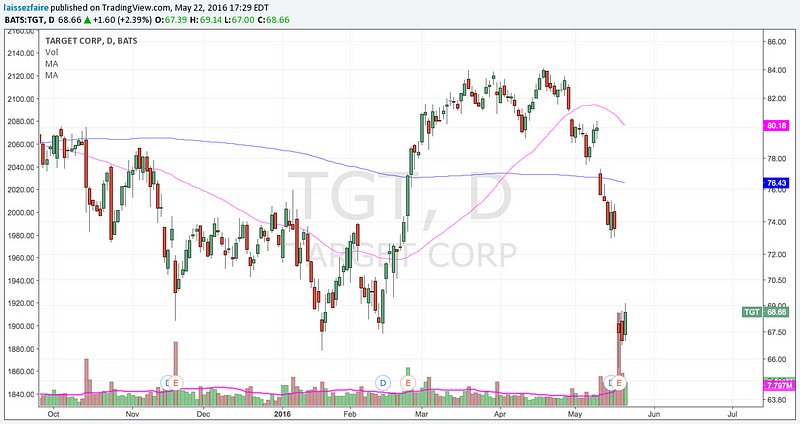
If we zoom-out and look at the bigger picture, real estate investment trusts (REITs) could be the next domino to fall in this consumer slowdown. Retail chain closures have increased since 2013 (a large part of which is likely due to the ascension of online retailers such as Amazon and Net-A-Porter). At the current rate, 2016 closures could easily set a post-crisis watermark:
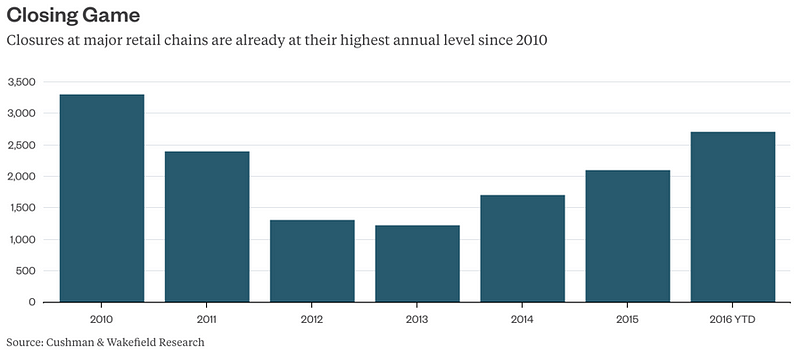
Since last May, mall REITs have underperformed the market and other categories might not be far behind. Interestingly, given the host of bad news coming from retailers, it appears the worsening fundamentals have yet to bleed-over to retail REITs. This might be due to the fact that investors are still fervently, or some might say blindly, chasing yield in a Fed-induced ZIRP environment:
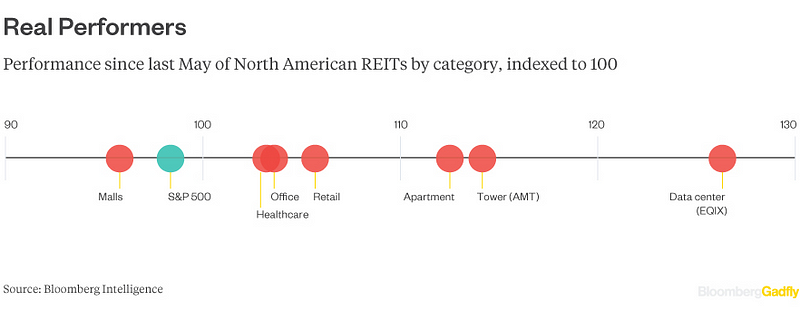
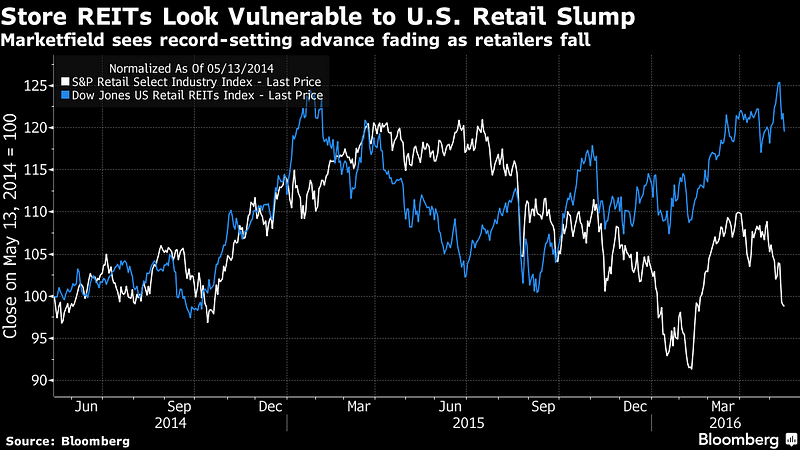
A higher resolution picture of mall REIT performance gives us a sense of how quickly some of these names have fallen out of favor with the markets:
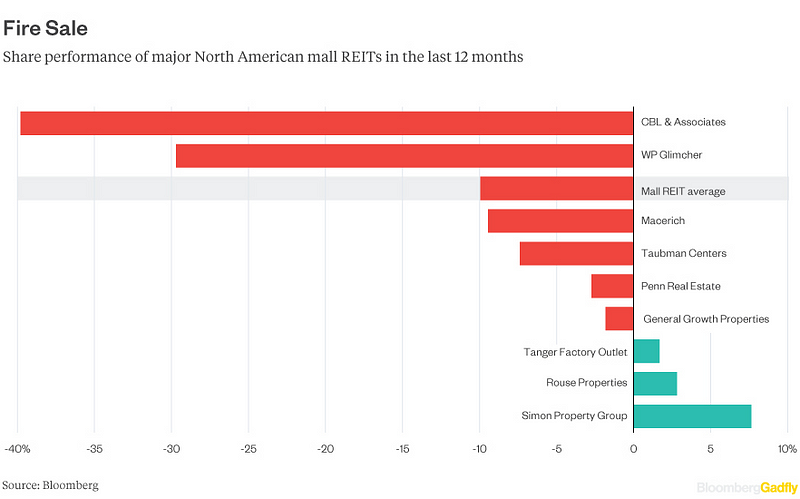
Another worrying trend is the rapid decline in net real estate investment by equity REITs. The last time we observed such low levels was in the midst of the Great Recession, and we know that official recession identification is retrospective, never concurrent. It’s also interesting to note how the real estate correction has magnified over the last two recessions. This makes sense because of the invention of mortgage securitization and record-low interest rates that encourages speculation in real estate:
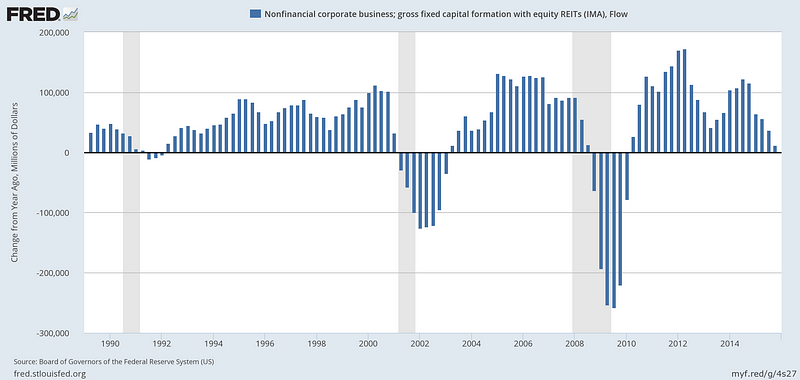
Of the three mall REITs that posted positive performances in the past 12 months, let’s take a quick look at the technicals for Simon Property Group (SPG) and Tanger Factory Outlet (SKT).
Since 2009, SPG has appreciated over 300% and has held its long-term trend-line on numerous occasions. While it may be “the cleanest bed-sheet in the brothel”, the RSI and MACD indicators have diverged from the price action beginning in 2015. The RSI also indicates that the stock is heavily overbought, without being near oversold territory in the past seven years:
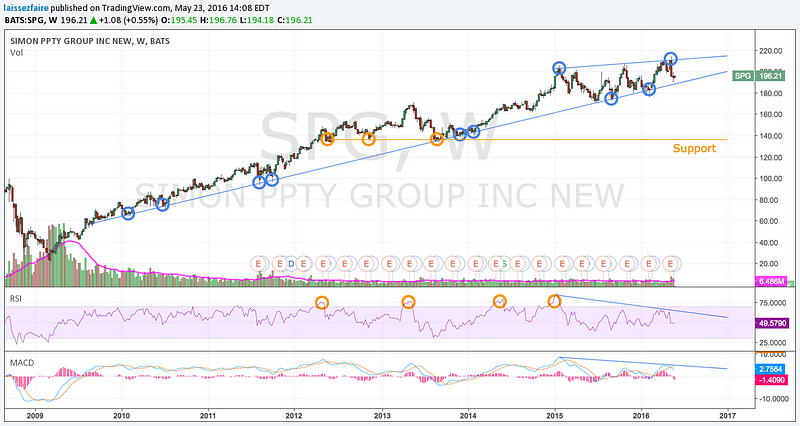
SKT’s technicals look slightly worse. The stock is now trading within a declining channel and the price action is confirmed by RSI and MACD. Similar to SPG, this stock has been seriously overbought since 2009:
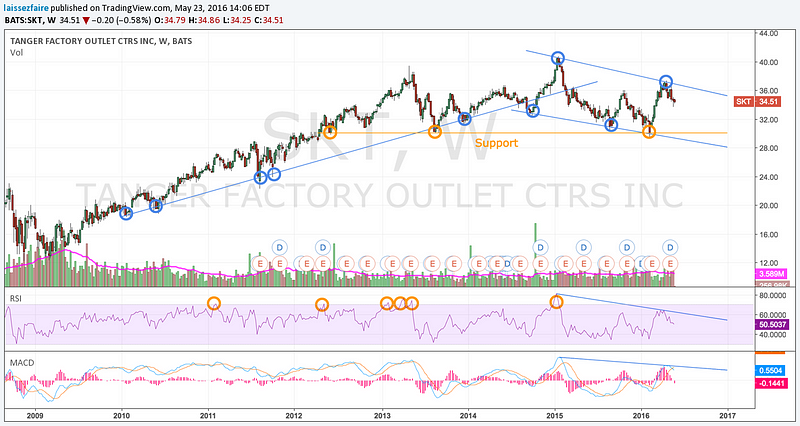
While markets are myopically co-moving to the siren songs of Fed hawks and doves, deteriorating fundamentals are becoming harder to ignore. Like wildfires, it’s hard to predict how quickly and where market panic will spread to next. However, the chain-reaction of peak consumer credit growth, softening retail sales, and tightening credit conditions does not bode well for REITs going forward.
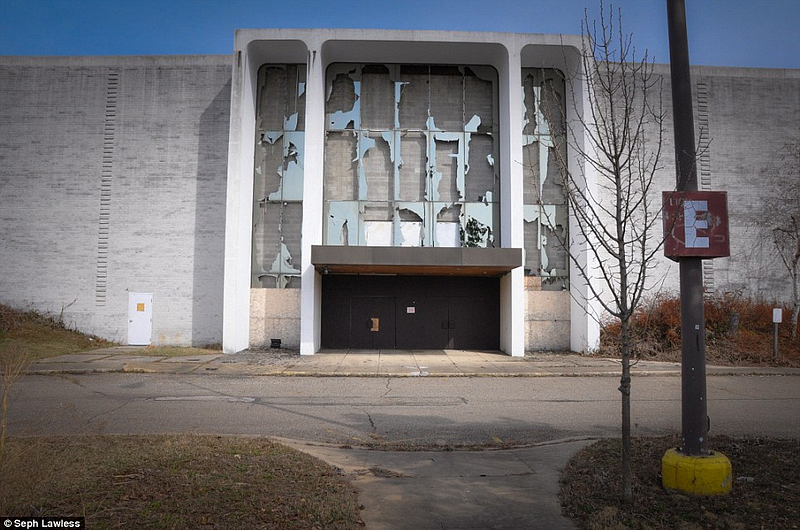
The post Myopic Markets & The Looming Mall REITs Massacre appeared first on crude-oil.top.
